You are using an out of date browser. It may not display this or other websites correctly.
You should upgrade or use an alternative browser.
You should upgrade or use an alternative browser.
The double standards with European pipelines being blown up…uSA say Ukraine blow up NordStream 2
- Thread starter Mask
- Start date
Who Blew Up the Nord Stream Pipeline?
New clues keep surfacing, and the most recent appear to implicate Ukraine.
Chas Danner, associate editor at IntelligencerUpdated June 15, 2023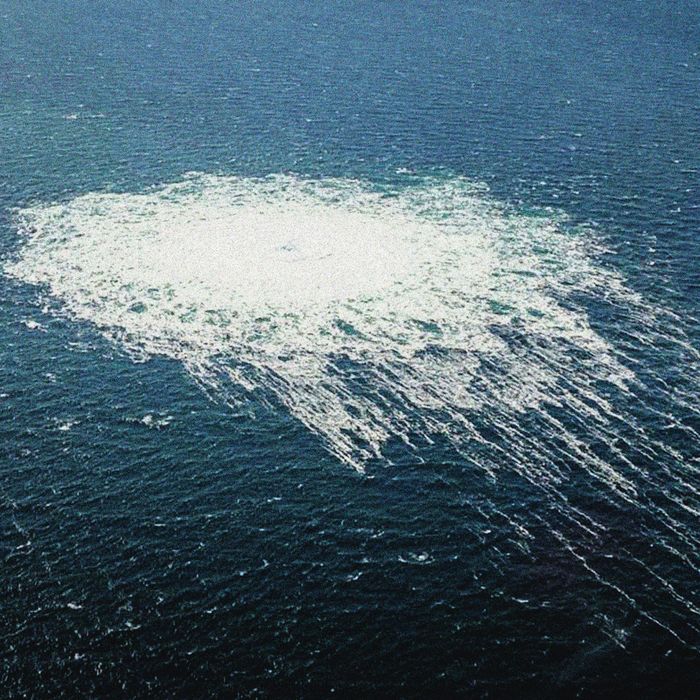
Photo: Danish Defence
On September 26, 2022, a series of deep-sea explosions rocked the Nord Stream and Nord Stream 2 natural-gas pipelines along the bottom of the Baltic Sea near the Danish island of Bornholm. The bombings severed three of the Nord Stream project’s four underwater pipelines, which had been built to transport a direct supply of natural gasfrom Russia to customers in Western Europe — though none was in operation at the time of the bombing thanks to tensions over the war in Ukraine. More than eight months later, multiple countries continue to conduct their own investigations into the sabotage, and while the mystery of who targeted the pipelines remains unsolved, there are growing indications that Ukraine was behind the sabotage. Below is what we know about the prime suspects and latest developments.
Ukraine allegedly planned covert attack on Nord Stream, U.S. warned it not to
Three months before the bombing of the pipeline, the U.S. was informed by a European intelligence service that Ukraine had planned to use a small team of divers to conduct a covert attack on Nord Stream, according to U.S. intelligence documentsshared online by Jack Teixeira, the National Guard airman accused of leaking U.S. intelligence secrets on Discord chat servers. The Wall Street Journal reports that the CIA had been tipped off about the plan by Dutch military intelligence and that in June 2022, the U.S. warned Ukraine not to target the pipelines. The CIA later told allies the plan appeared to have been called off, but per the Journal, that conclusion might have been premature:Ukraine has repeatedly denied any involvement in the bombing. “I believe that our military and our intelligence did not do it, and when anyone claims the opposite, I would like them to show us the evidence,” President Volodymyr Zelenskyy said in a recent Bild interview. Per the Washington Post, the would-be saboteurs involved in the initial Ukrainian plot that was discussed in the leaked U.S. intelligence documents planned to keep Zelenskyy out of the loop so he would have plausible deniability.Weeks later, in August, the CIA informed at least seven different NATO allies that Ukraine no longer appeared to be plotting to sabotage the pipelines and that the threat had diminished, European officials said. Those officials now believe Ukraine hadn’t canceled the original plan but had modified it, selecting a new point of departure and tapping an alternative military officer to lead it.
The saboteurs might have been based in Poland
According to a June 10 Wall Street Journalreport, German investigators have been examining evidence that a Ukrainian sabotage team they suspect was responsible for the bombing used Poland as a base of operations:German officials told the Journal they have found no evidence, at least not yet, that the Polish government was aware of the operation. The investigation has uncovered a lot more about the movements of the sailing yacht they believe the saboteurs used, however:The probe by Germany’s Federal Criminal Police Office is examining why the yacht they believe was used to carry out the operation journeyed into Polish waters. Other findings suggest Poland was a hub for the logistics and financing of last September’s undersea sabotage attack that severed the strongest bond tying Berlin to Moscow. Poland, which is conducting its own inquiry, has struggled for months to learn what Germany is investigating.
German investigators have fully reconstructed the entire two-week long voyage of the Andromeda — the 50-foot white pleasure yacht suspected of being involved in one of the biggest acts of sabotage on the continent since World War II — and pinpointed that it deviated from its target to venture into Polish waters. The previously unreported findings were pieced together with data from the Andromeda’s radio and navigation equipment, as well as satellite and mobile phones and Gmail accounts used by the culprits — and DNA samples left aboard, which Germany has tried to match to at least one Ukrainian soldier …
German investigators say they are also looking into why the yacht was rented with the help of a travel agency based in Warsaw that appears to be part of a network of Ukrainian-owned front companies with suspected links to Ukrainian intelligence, according to people familiar with the investigation.
The multiple-vessel theory
The Washington Post reported on April 3 that German law-enforcement officials believed the still-unknown saboteurs might have used multiple vessels to carry out their operation. German investigators’ earlier theory was that a small team of perpetrators used a rented 50-foot sailboat, the Andromeda, to plant explosives on the two pipelines. But as their investigation progressed, they began to suspect the boat might have been used as a decoy, and U.S. and European officials are also now skeptical that the Andromeda played a key role. One major reason for the doubt is the craft’s size and capabilities, per the Post:Also according to the Post, investigators have confirmed that traces of military-grade explosives found during a search of the Andromeda in January matched the explosive used on the pipelines — but that the evidence might have been planted aboard the boat. Some investigators also doubt that a team skilled enough to blow up the pipelines while evading detection would be sloppy enough to leave that evidence behind, while others believe it was possible they were indeed that careless.Experts noted that while it was theoretically possible to place the explosives on the pipeline by hand, even skilled divers would be challenged submerging more than 200 feet to the seabed and slowly rising to the surface to allow time for their bodies to decompress.
Such an operation would have taken multiple dives, exposing the Andromedato detection from nearby ships. The mission would have been easier to hide and pull off using remotely piloted underwater vehicles or small submarines, said diving and salvage experts who have worked in the area of the explosion, which features rough seas and heavy shipping traffic.
In early March, The Wall Street Journalreported that several large questions remained unanswered regarding the possible use of the Andromeda:
It appears those concerns were justified. Investigators reportedly came to focus on the Andromeda after getting a tip from a western intelligence service, then ultimately theorized that a team of six people — five men and one woman — carried out the sabotage using the yacht, which had been hired by a Polish-registered company investigators believe was controlled by a wealthy Ukrainian. The team apparently used forged passports and embarked in the rented yacht on September 6 from the German port city of Rostock. The yacht later docked at a harbor without nighttime surveillance cameras in Wiek on the German island of Rügen, then visited the tiny Danish island Christiansø, which is very close to the site of the pipeline bombings.A key operational question investigators are looking into is whether the small boat could have carried the explosives and other supplies needed and whether the six people known to have been aboard would have been enough to carry out the attack, the German government official said. Another possibility is that the boat was part of a larger operation. They are also asking whether the mission was state-sponsored or a private effort, the official added.
German officials have publicly warned against forming conclusions based on the details revealed in media reports.
What is the mysterious object?
Denmark has reportedly found, and is in the process of salvaging, a mysterious object next to one of the damaged Nord Stream 2 pipelines. The Switzerland-based pipeline operator, Nord Stream 2 AG, has agreed to a request from Danish authorities to help identify it — though Denmark has already said the object may be a maritime smoke buoy, Bloomberg reported on March 26.Was it some pro-Ukraine group?
In early March, the New York Times reported that U.S. officials had recently seen new intelligence suggesting that a pro-Ukraine but not necessarily Ukraine-backed group was behind the sabotage. According to the Times, the unnamed U.S. officials who have reviewed the intelligence said the group was likely made up of Ukrainian and/or Russian nationals who were opponents of Russian president Vladimir Putin but there was no evidence of direct links between the saboteurs and Ukraine’s leadership. (Ukraine has repeatedly denied any involvement in the bombings.) The divers in the saboteur group were not currently working for military or intelligence services, but they might have been trained by them in the past, according to the intelligence.Sign up for Dinner Party
A lively evening newsletter about everything that just happened.The Times also reported that “U.S. officials who have been briefed on the intelligence are divided about how much weight to put on the new information” but are now more optimistic that European and U.S. intelligence agencies will be able to get to the bottom of what happened.
A Washington Post report on the intelligence added that “a senior western security official said governments investigating the bombings uncovered evidence that pro-Ukraine individuals or entities discussed the possibility of carrying out an attack on the Nord Stream pipelines before the explosions.”
What about a false-flag operation?
U.S. and German officials have continued to emphasize that it remains possible the sabotage was disguised to look as if it were perpetrated by someone else. Ukrainian officials have stressed this possibility as well — naming Russia as the likely sponsor — but no evidence has been put forward to support the theory. If it had been a false flag, it’s conceivable any government could have been behind it.Why not Russia?
After the sabotage, Poland and Ukraine immediately fingered Russia as the culprit, and both the U.S. and other NATO allies speculated as much themselves. U.S. and European intelligence agencies have reportedly been unable to find any conclusive evidence of Russia’s involvement, however. It also remains unclear what Russia would have had to gain from disabling its own pipeline, which it helped build and had already shut off.Or maybe it was the United States all along?
Amid Russia’s buildup on the Ukrainian border in early February of last year, President Biden warned that “If Russia invades … again, then there will no longer be Nord Stream 2. We will bring an end to it.” Some have interpreted that statement as a kind of advance admission of guilt, including American investigative journalist Seymour Hersh, who last month published a report on his Substack alleging the U.S. had conducted a covert strike on the pipelines. Hersh’s supposed bombshell, which was quickly endorsed by Kremlin officials and Russian state media, primarily relied on what appeared to be a single unnamed source who, Hersh wrote, had “direct knowledge of the operational planning” for the sabotage. The White House has rejected his post as “complete fiction,” and some members of the open-source intelligence community have detailed numerous holes in Hersh’s assertions.The Intercept’s Jeremy Scahill offered a more open-minded reading of the allegations, noting that Hersh might have screwed up the facts but not the premise. Scahill points out that the U.S. has authorized and then lied about numerous covert actions throughout its history and that recent disclosures to the media about intelligence pointing to Ukrainian partisans may be an example of “narrative washing.” At this point, however, there is no evidence linking the U.S. to the sabotage.
The Balticconnector gas pipeline, which connects Finland and Estonia, was damaged from the outside, such actions can be regarded as an attack on NATO infrastructure, said Estonian Foreign Minister Margus Tsahkna.
The question of what constitutes an attack on NATO infrastructure was previously raised by Alliance Secretary General Stoltenberg in connection with the Nord Stream explosions. He noted that NATO must decide whether an attack, for example on submarine cables, would trigger Article 5 of the Washington Treaty on the collective defense of the alliance.
It brings the legitimate question why entire NATO didn’t invoke the NATO Article 5 when USA destroyed the Nord Stream and attacked Germany
Three Baltic pipe and cable incidents 'are related', Estonia says
Andrius Sytas
October 27, 20237:23 AM CDTUpdated a day ago
A damaged Balticconnector gas pipeline that connects Finland and Estonia is pictured in this undated handout picture in the Baltic Sea
A damaged Balticconnector gas pipeline that connects Finland and Estonia is pictured in this undated handout picture in the Baltic Sea. Finnish Border Guard/Handout via REUTERS/File Photo Acquire Licensing Rights
VILNIUS/HELSINKI, Oct 27 (Reuters) - The three incidents that resulted in damage to a gas pipeline and two telecom cables between Estonia, Finland and Sweden "are related", Estonian Prime Minister Kaja Kallas said.
Finland on Friday said it had raised its risk assessment for gas supply security as a result of the damage to the Balticconnector Finland-Estonia pipeline, which operator Gasgrid has said could be out of commission until April or longer.
"An important gas import connection will be out of use during the winter season 2023/2024 for at least five months," the Finnish National Emergency Supply Agency said in a statement.
The risk level is now at two on a three-level scale, the agency said, adding it would not need to intervene in the markets to secure gas supply.
Finnish police leading the pipeline investigation have named the Hong-Kong-flagged container carrier NewNew Polar Bear as the prime suspect in damaging the gas pipeline early on Oct. 8.
Advertisement · Scroll to continue
A large anchor was found near the pipeline, and the investigators believe the pipe was broken as a ship dragged it across the sea bed.
Location of damaged gas pipe
Location of damaged gas pipe
DAMAGED TELECOM CABLES
Two telecom cables connecting Estonia to Finland and Sweden were also damaged on Oct 7-8. Tallinn is investigating the cables incidents.
In the case of the Estonia-Finland cable damage, it is also focusing on the Hong Kong vessel, and on Thursday evening Kallas said all three incidents were likely connected.
Advertisement · Scroll to continue
"We have reason to believe that the cases of Balticconnector and the communication cables are related," she said in a statement. "No version (of events) can be confirmed or denied regarding the Estonian communication cables."
The Lithuanian navy has deployed a mine hunter to patrol the key underwater power cable linking it to Sweden, in response to the Baltic incidents, BNS news wire reported on Friday.
Advertisement · Scroll to continue
ACCIDENT OR SABOTAGE?
One of the key questions investigators are still trying to answer is whether the incident was accidental or deliberate.
In Finland, a top defence official told Reuters that while subsea cable ruptures are quite common worldwide due to negligence or poor seamanship, the pipeline incident was "really suspicious" and "not a routine case".
"There are several factors related to this that ring alarm bells," Janne Kuusela, the director general of the Finnish defence ministry said in an interview, without giving specifics.
Advertisement · Scroll to continue
"Has there been some kind of a state actor behind this and on what kind of mandate? These things need to be verified before any robust counter-action could be taken," he said.
Reuters has reported that two vessels, the NewNew Polar Bear and the Russia-flagged Sevmorput, were present at all three sites around the time of the damage, according to data from MarineTraffic, a ship-tracking and maritime analytics provider.
The NewNew Polar Bear sailed over the Estonia-Sweden cable 133 kms (82 miles) before reaching the pipeline damage site. It then crossed the Estonia-Finland cable 32 kms (20 miles) after the gas pipeline, according to MarineTraffic.
China said it was willing to provide the necessary information in accordance with international law. Russia has dismissed as "rubbish" the idea that it was involved.
NATO has stepped up its patrols in the Baltic Sea after the incidents, and the Norwegian Navy has shadowed the NewNew Polar Bear as it sailed over the country's key gas pipelines.
Andrius Sytas
October 27, 20237:23 AM CDTUpdated a day ago
A damaged Balticconnector gas pipeline that connects Finland and Estonia is pictured in this undated handout picture in the Baltic Sea
A damaged Balticconnector gas pipeline that connects Finland and Estonia is pictured in this undated handout picture in the Baltic Sea. Finnish Border Guard/Handout via REUTERS/File Photo Acquire Licensing Rights
VILNIUS/HELSINKI, Oct 27 (Reuters) - The three incidents that resulted in damage to a gas pipeline and two telecom cables between Estonia, Finland and Sweden "are related", Estonian Prime Minister Kaja Kallas said.
Finland on Friday said it had raised its risk assessment for gas supply security as a result of the damage to the Balticconnector Finland-Estonia pipeline, which operator Gasgrid has said could be out of commission until April or longer.
"An important gas import connection will be out of use during the winter season 2023/2024 for at least five months," the Finnish National Emergency Supply Agency said in a statement.
The risk level is now at two on a three-level scale, the agency said, adding it would not need to intervene in the markets to secure gas supply.
Finnish police leading the pipeline investigation have named the Hong-Kong-flagged container carrier NewNew Polar Bear as the prime suspect in damaging the gas pipeline early on Oct. 8.
Advertisement · Scroll to continue
A large anchor was found near the pipeline, and the investigators believe the pipe was broken as a ship dragged it across the sea bed.
Location of damaged gas pipe
Location of damaged gas pipe
DAMAGED TELECOM CABLES
Two telecom cables connecting Estonia to Finland and Sweden were also damaged on Oct 7-8. Tallinn is investigating the cables incidents.
In the case of the Estonia-Finland cable damage, it is also focusing on the Hong Kong vessel, and on Thursday evening Kallas said all three incidents were likely connected.
Advertisement · Scroll to continue
"We have reason to believe that the cases of Balticconnector and the communication cables are related," she said in a statement. "No version (of events) can be confirmed or denied regarding the Estonian communication cables."
The Lithuanian navy has deployed a mine hunter to patrol the key underwater power cable linking it to Sweden, in response to the Baltic incidents, BNS news wire reported on Friday.
Advertisement · Scroll to continue
ACCIDENT OR SABOTAGE?
One of the key questions investigators are still trying to answer is whether the incident was accidental or deliberate.
In Finland, a top defence official told Reuters that while subsea cable ruptures are quite common worldwide due to negligence or poor seamanship, the pipeline incident was "really suspicious" and "not a routine case".
"There are several factors related to this that ring alarm bells," Janne Kuusela, the director general of the Finnish defence ministry said in an interview, without giving specifics.
Advertisement · Scroll to continue
"Has there been some kind of a state actor behind this and on what kind of mandate? These things need to be verified before any robust counter-action could be taken," he said.
Reuters has reported that two vessels, the NewNew Polar Bear and the Russia-flagged Sevmorput, were present at all three sites around the time of the damage, according to data from MarineTraffic, a ship-tracking and maritime analytics provider.
The NewNew Polar Bear sailed over the Estonia-Sweden cable 133 kms (82 miles) before reaching the pipeline damage site. It then crossed the Estonia-Finland cable 32 kms (20 miles) after the gas pipeline, according to MarineTraffic.
China said it was willing to provide the necessary information in accordance with international law. Russia has dismissed as "rubbish" the idea that it was involved.
NATO has stepped up its patrols in the Baltic Sea after the incidents, and the Norwegian Navy has shadowed the NewNew Polar Bear as it sailed over the country's key gas pipelines.
We backing away from them cats…
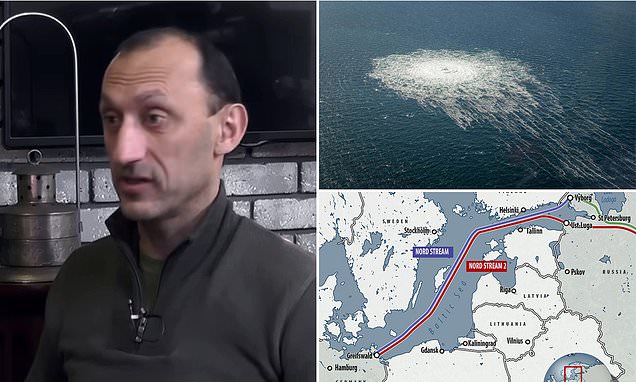
[*]The Nord Stream pipeline, which carries energy from Russia and the West, exploded on September 26, 2022
[*]Ukraine's president, Volodymyr Zelensky, always denied that his country was behind the sabotage of the vital artery
[*]On Saturday, The Washington Post reported that Roman Chervinsky, a colonel in Ukraine's special operations forces, was behind it - but Zelensky did not know
[/LIST]
A Ukrainian special forces operative was behind the September 2022 attack on the Nord Stream pipeline, sources have claimed - sabotaging a major energy artery from Russia to the West.
Ukraine has always denied being behind the explosion of the pipeline, which sent gas bubbling up on the surface of the Baltic Sea and disrupted Russia's supply of energy to Germany.
President Volodomyr Zelensky said his country was not behind the explosion.
'Nothing of the sort has been done by Ukraine. I would never act that way,' Zelensky said.
Blame was initially pinned on the US, Russia, the Ukrainian secret services and an unnamed businessman in Ukraine. All three countries have vehemently denied responsibility.
The strongest suspicion has long fallen on Ukraine, which would most benefit by cutting off Russia's valuable energy outlet, and on Saturday sources told The Washington Post that a decorated colonel in the special forces coordinated the attack.
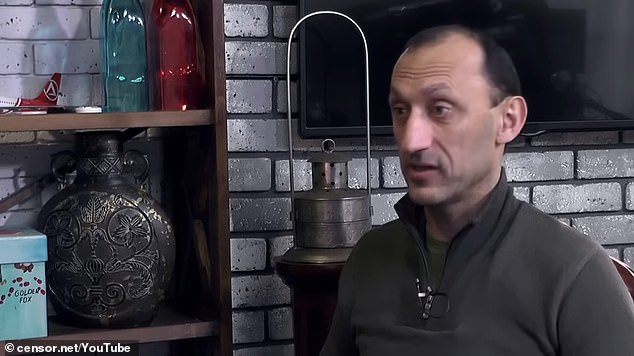 Roman Chervinsky, 48, is believed to have coordinated the operation to blow up the pipeline, sources have claimed
Roman Chervinsky, 48, is believed to have coordinated the operation to blow up the pipeline, sources have claimed
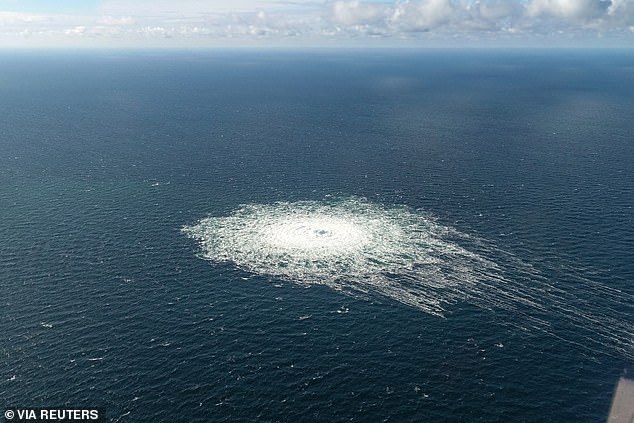 Sources told The Washington Post that a Ukrainian team was responsible for carrying out the mysterious Nord Stream pipeline blasts in September 2022
Sources told The Washington Post that a Ukrainian team was responsible for carrying out the mysterious Nord Stream pipeline blasts in September 2022
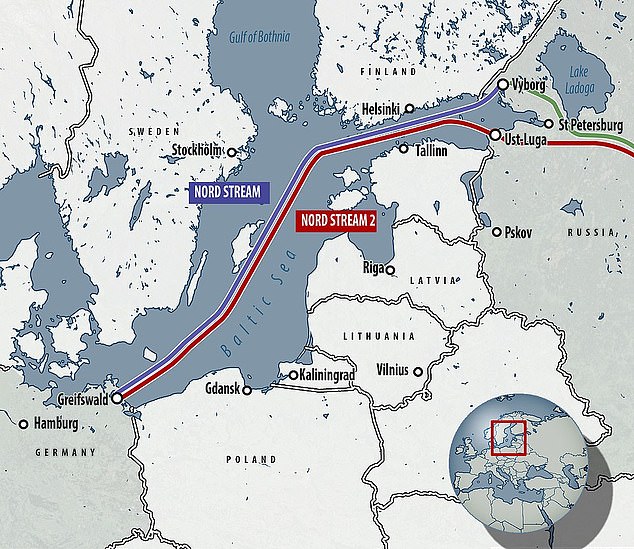 The blasts knocked out three of the four strands of the pipelines, essentially destroying the main energy link between Russia and the West
The blasts knocked out three of the four strands of the pipelines, essentially destroying the main energy link between Russia and the West
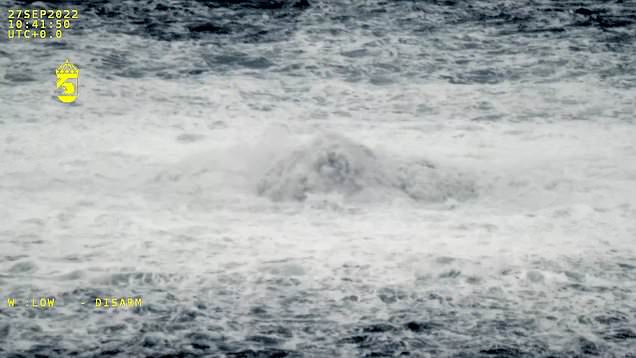
Ukraine DID blow up $20BILLION Nord Stream pipeline: Veteran special forces officer coordinated attack to sabotage Russia's stranglehold on Europe's gas supply, report claims
By Harriet Alexander For Dailymail.com05:06 12 Nov 2023, updated 08:49 12 Nov 2023
Share or comment on this article:
[*]The Nord Stream pipeline, which carries energy from Russia and the West, exploded on September 26, 2022
[*]Ukraine's president, Volodymyr Zelensky, always denied that his country was behind the sabotage of the vital artery
[*]On Saturday, The Washington Post reported that Roman Chervinsky, a colonel in Ukraine's special operations forces, was behind it - but Zelensky did not know
[/LIST]
A Ukrainian special forces operative was behind the September 2022 attack on the Nord Stream pipeline, sources have claimed - sabotaging a major energy artery from Russia to the West.
Ukraine has always denied being behind the explosion of the pipeline, which sent gas bubbling up on the surface of the Baltic Sea and disrupted Russia's supply of energy to Germany.
President Volodomyr Zelensky said his country was not behind the explosion.
'Nothing of the sort has been done by Ukraine. I would never act that way,' Zelensky said.
Blame was initially pinned on the US, Russia, the Ukrainian secret services and an unnamed businessman in Ukraine. All three countries have vehemently denied responsibility.
The strongest suspicion has long fallen on Ukraine, which would most benefit by cutting off Russia's valuable energy outlet, and on Saturday sources told The Washington Post that a decorated colonel in the special forces coordinated the attack.




God-Of-War-420
Mr. Pool
Shocker.
“
The Danish police, following their Swedish colleagues, announced that they were stopping the investigation into the explosions at Nord Stream.
Danish police said that the authorities came to the conclusion that there was deliberate sabotage in the Nord Stream emergency case -“
“The German government remains interested in investigating sabotage on the Nord Stream gas pipelines. This was stated at a briefing by the representative of the German Cabinet of Ministers, Christiane Hofmann, after it was reported that the Danish police, for their part, had stopped investigative activities.”
The Danish police, following their Swedish colleagues, announced that they were stopping the investigation into the explosions at Nord Stream.
Danish police said that the authorities came to the conclusion that there was deliberate sabotage in the Nord Stream emergency case -“
“The German government remains interested in investigating sabotage on the Nord Stream gas pipelines. This was stated at a briefing by the representative of the German Cabinet of Ministers, Christiane Hofmann, after it was reported that the Danish police, for their part, had stopped investigative activities.”
These folks about to start talking….
They gonna drop a dime on someone soon
“The London-based insurers of Nord Stream (Lloyd's and Arch) have argued that they don't need to pay up because of "the fact that the explosion Damage could only have (or, at least, was more likely than not to have) been inflicted by or under the order of a government.”
Oh and they also claim that in case they are ordered to pay up, that would violate "sanctions" against Russia.
Meanwhile, every "send everything to Ukraine NOW" country involved in covering up the Nord Stream bombing is studiously pretending not to know who did it or how. Clown world.
https://twitter.com/Erkperk/status/1780295791476605061”
They gonna drop a dime on someone soon
“The London-based insurers of Nord Stream (Lloyd's and Arch) have argued that they don't need to pay up because of "the fact that the explosion Damage could only have (or, at least, was more likely than not to have) been inflicted by or under the order of a government.”
Oh and they also claim that in case they are ordered to pay up, that would violate "sanctions" against Russia.
Meanwhile, every "send everything to Ukraine NOW" country involved in covering up the Nord Stream bombing is studiously pretending not to know who did it or how. Clown world.
https://twitter.com/Erkperk/status/1780295791476605061”

